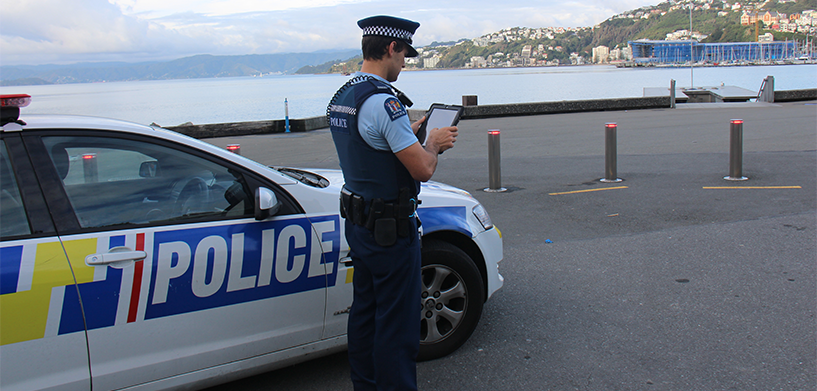Public safety agencies are undergoing processes of modernization and continuous improvement and are challenged to digitally transform operations. There’s a lot of high-level talk in the marketplace about the specifics of digital transformation and the capabilities agencies need to achieve it.
What do agencies need to make this happen? What do they want? We spoke with Hexagon experts around the world to find out, and we’ll be sharing their perspectives in a series of blog posts.
Here’s what David Goedecke had to say about public safety agencies in the Asia-Pacific (APAC) region.
Wendy Sack: How do you define digital transformation when it comes to public safety agencies, and what kinds of challenges do these agencies face as a result of this transformation?
David Goedecke: One aspect of digital transformation in public safety is to meet both community and first responder expectations of different channels of communication with the public safety answering points (PSAP) and communication centres. In Australia and New Zealand, nearly 80% of all calls received for emergency services come from mobile phones; in many parts of the APAC region that number is close to 100%. When the public calls for the emergency services on a mobile phone there’s an expectation they can be easily and automatically located and can provide additional information to support their call (for example, photos and videos of the incident). Similarly, emergency responders want to use a mobile device they are familiar with, and not be expected to use multiple devices for different parts of their workflow. They also want intelligently presented, real-time and historical data at their fingertips to support their in-field decision-making.
A second aspect of digital transformation is to enable real-time collaboration between responding organisations. This is not only between agencies in the emergency services sector, but also between the sector and other organisations and businesses that provide critical services to the community. A significant incident invariably involves multiple emergency services, utilities, federal, state and local government agencies, and disaster relief organisations. Just as the COVID-19 pandemic brought investment in employee collaboration tools, the need for collaboration between disparate organisations demands investment in similar technologies. These must be geared towards the unique needs of the emergency services and the nature of their work.
The third aspect of digital transformation is related to how the organisations deal with the vast amount of data available. How to collect, store and filter the available data in a meaningful way, transforming that into relevant information and knowledge to allow them to make the best decisions. Not only historical data, but also information coming from multiple channels of communication, sources and devices. In this context, leveraging data visualisation tools and machine learning to provide assistive artificial intelligence is key. Assistive AI is not predictive analytics; it is a tool for both first responders and analysts to amplify their decision-making and intuition and support their judgement. It can ease first responder and PSAP workloads and stress. Data visualisation also allows emergency services and their regulatory and governing bodies to provide performance data to their stakeholders and residents. This can promote open and transparent operations by these bodies and ensure they are held to high levels of accountability for their service.
Finally, I think one of the biggest challenges for the agencies is the need to adapt to the fast pace of the technological change in the world but at the same time to innovate cautiously so that service provision is not impacted or jeopardised by that change. This will allow them to make the best use of the new digital technology available today and to prepare for the future.
WS: Is it fair to say that modernization can be challenging because many public safety agencies have relied on legacy technology for quite some time? Plus, investments in new technology can take more time?
DG: End-to-end public safety solutions are complex and must be highly reliable. They are called upon thousands of times every day to support critical operations. For these reasons, changing or updating systems and equipment is a lengthy and complex exercise when systems must continue to operate 24/7. Consequently, public safety agencies end up using a mix of current and legacy technologies to provide their services. A comprehensive digital transformation can be challenging because it needs to integrate all these diverse components and allow modernisation of separate bits and pieces as they become viable and feasible.
WS: What other considerations make modernization difficult for public safety agencies?
DG: Of course, it starts with funding and the increased demand and pressure on agencies that continues with the COVID-19 pandemic and its aftermath. In real terms, increases in demand for emergency services continue to outpace increases in funding made available. Innovation therefore becomes a matter of doing more with less: opportunities for significant investment in systems are few. But there is more to be considered in terms of technology modernisation. Discovering what are the actual business workflows, the reason why they exist, interdependencies of existing systems, and then optimising them to enable the best and most effective use of new technology, can be difficult.
Cautious innovation also applies to change management. Understanding the impact change may have on the personnel and the public takes time. We also need to consider the potential uncertainty around new technology. At a time when workload and stress is already impacting staff retention, public safety agencies and their vendors must work together to ensure change for staff and the public is managed efficiently and thoughtfully. Lower staff retention and therefore higher turnover also demands optimised training programs, and an ability to deliver training in the use of the current and new technology quickly and optimally. Self-paced, online training programs are developed in tandem with new applications, giving new and existing staff an end-to-end view of the system and its operation.
Speed of introduction of change needs to always be balanced with what is feasible to be done without disrupting your service, therefore it can be a long journey, taking years to do a complete transformation. There are unknown unknowns to think about. It is key to minimise disruptions, and it is key to learn the interdependencies of systems and solutions built organically over time.
WS: As more and more data are available as a result of digital transformation, agencies are facing increasing requirements for transparency and more accountability in their communities. How does this impact the daily work of these agencies? What are the advantages and disadvantages?
DG: Everything we do online is recorded; everywhere we go we’re on video and a lot of frontline personnel now have body-worn cameras. The public also has its smartphones out and they’re taking photos and videos of everything. This puts first responders under greater scrutiny and puts more pressure on employees to know that their work is always being reviewed by management and the public. However, it puts an onus on emergency services employers to educate and inform their workforce how they need to behave and how to adapt their processes to this reality, so they collect data appropriate to the situation. The public needs to understand that they will be increasingly accountable for their actions towards first responders as well.
A digitally transformed agency will be a learning organisation and will be able to respond faster to questions of accountability from their stakeholders and residents. It will be able to provide operational and governance insights to its partner agencies, regulatory bodies and the people it serves.
WS: What are the biggest wants and needs of today’s public safety providers?
DG: Many agencies are talking about digital transformation. What that means is that they want to adapt faster to an increasing demand and to the need for change, while providing a better service with a reduced budget in real terms. They want to be more efficient. While they are well organised to provide the “business as usual” response, they need to be better at reacting to changes in demand patterns, spikes in call volumes and large-scale and complex events. They also need to be ready to receive calls for service from multiple channels and to integrate and use information coming from multiple sources.
Most agencies also want to be more connected. They want to collaborate simply and efficiently with their partner agencies, stakeholders and second and third level responders. They want to have a common operational picture available, covering large geographical areas and with multiple agencies. And they would like to make use of all available channels to communicate with the public and other agencies. Again, digital transformation helps them achieve this outcome.
WS: If you had to pick one thing you think these agencies would want from their digital transformation/modernization journeys, what would it be and why?
DG: The most common outcome I’ve seen is that public safety agencies want to be able to provide a better service to their residents. Over the last few years, the volume of calls and the demand on public services have increased. In parallel to that, the public has become accustomed to new and more interactive technology, which increases their expectations of any service, not just of public safety. Occasionally, the demand on a public safety agency will be overwhelming. If an agency reviews its processes and understands its internal challenges, it’s going to be in a much better place to meet those demands and will be more aligned to be digitally transformed.
Let’s do this together.
Want to learn about Hexagon’s public safety solutions? Contact us today!

David Goedecke, customer experience manager for Hexagon’s Safety, Infrastructure & Geospatial division in the Asia-Pacific region, is based in Melbourne, Australia.
















